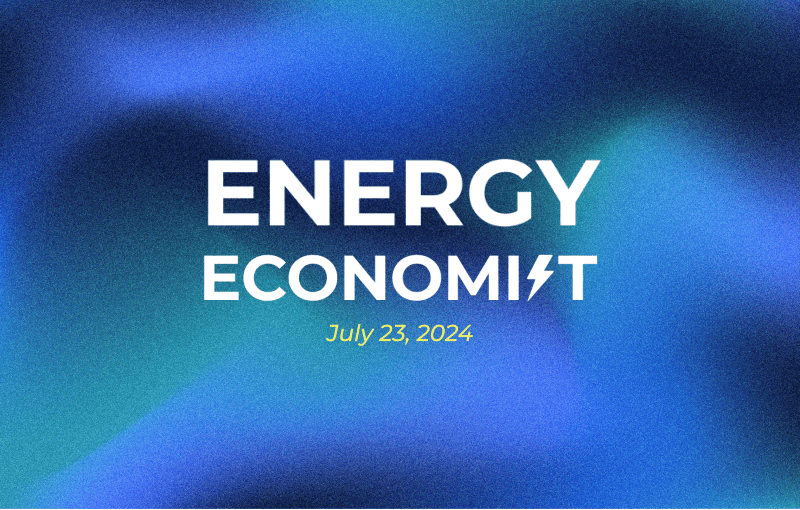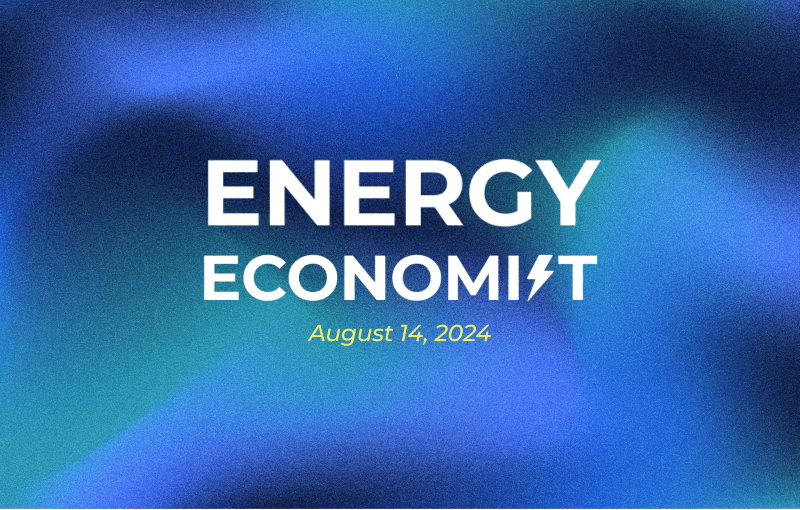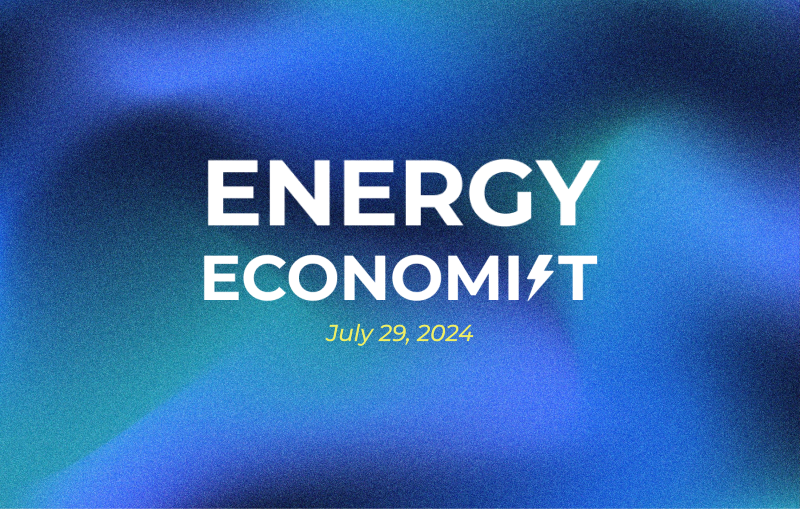Market Update: July 1, 2024
This Week's Update:
The near-term natural gas market saw some weakness on Friday as the prompt month (Aug) closed more than eight cents lower to settle at $2.60/MMBtu. Through the end of the curve there were some gains in Cals ’26-’34, up one to five cents on the day.
-
Fundamentals:
-
Production has remained steady around the 101 Bcf/d levels for the past week
-
Demand has softened. LNG exports started last week off lower as few of the facilities took in less gas for Monday and Tuesday, but export volumes have rebounded to nearly 13 Bcf/d. Bentek is currently projecting a 20 Bcf injection for the week ending June 27
-
EIA/Gas Storage: For the week ending June 21, 2024, the EIA reported an injection of 52 Bcf into underground storage vs. an estimated injection of 56 Bcf. Inventories are 3,097 Bcf or 11.3% (314 Bcf) more than the same period last year and 20.6% (528 Bcf) more than the 5-year average.
Weather impact:
-
Weather forecasts indicate that above-normal temperatures will stick around along the East Coast and west of the Rockies to California for this week. Into the second week of July, that heat will be widespread, encompassing most of the country
-
DTN’s 16–30-day forecast could feature more than 206 CDDs in a fifteen-day span as extensive bullish anomalies extend over the Central US into the heart of summer
In short:
-
As noted last week, medium-term upside remains a distinct possibility for NYMEX futures, but incremental upside remains a highly weather-driven call. DTN is forecasting record July heat at 431 Cooling Degree Days (CDDs), with accompanying demand-pull strength likely to lead to upside potential for natural gas. If weather forecasts lapse, however—as over the prior week—downside is probable.
-
Brief weather weakness may also coincide with pipeline flow monitors exhibiting a tendency to trend higher into the end of the calendar month—offering near-term bearish risks for August.
-
-
A substantial rebound in dry gas production over the past two weeks—adding 1.6-1.8 Bcf/d (10-13 Bcf/week) has already softened upside for NYMEX pricing. A demonstrated proclivity for pipeline flows to rise into the end of the calendar month may lead to the impression of higher production—and softening prices—over the next 7-10 days. Further, many natural gas producers staring down historically weak market this spring opted to defer supply into the higher-priced summer—potentially leading to multiple well pads coming online into early July and further offset heat-based demand strength.
-
- Eventually, the market will have to reckon with bulging storage surpluses and high absolute storage levels, but a preoccupation with scorching summer temperatures may postpone the bulk of downside risks until late summer or early fall. Current NYMEX futures pricing has storage on a trajectory to approach 4,000 Bcf by the end of October—a level typically correlated to weaker autumn Henry Hub spot pricing. Divergent regional storage patterns offer further nuance, however, with plunging South Central surpluses the opposite of rising oversupply in the East Region. Together, however, returning production (and bulging oversupply in Canada), elevated storage north of 3,400 Bcf by Labor Day, and downside demand risks from both seasonality and tropical storm threats present an array of bearish hazards into the 90 day window.
- Based on current outlooks, we foresee a likely scenario in which NYMEX futures stumble in the immediate term on a weather soft patch and upside production risks before INCREASING over the next 30-45 days, particularly if the hot summer continues to arrive as predicted. Customers should look to take advantage of current fair-market value to hedge against potential summer price increases. Looking out further, we foresee prices coming down again as we approach the fall season (90 days)
In Depth:
- The July forecast remains sweltering and forecast to break all-time cooling demand records. Further, over the first two weeks of the month, the locus of heat anomalies based further south over the South Central and Southeast may be more supportive for power burns—a key shift relative to last week’s forecast with cooling rains denting demand in Texas and Florida.
-
DTN’s 16–30-day forecast could feature more than 206 CDDs in a fifteen-day span as extensive bullish anomalies extend over the Central US into the heart of summer. The recent heat wave set records in many parts of the Lower 48—for June. A repeat of extreme heat anomalies during mid-July could prompt even more substantial demand gains, particularly if temperatures average 3°F above normal across Texas. Still, a weaker Madden Jullian Oscillation could lead the pattern to “deamplify” into the end of July, eventually spelling a respite in temperatures. This roasting pattern—and the accompanying tiny weekly EIA injections likely to result—do not appear fully baked-in to the market and, should it verify, offer NYMEX front-month prices retesting $3.00/MMBtu.
-
- While heat-induced upside remains probable with meteorologists favoring extreme summer heat, NYMEX futures will eventually have to contend with storage nearing 3,200 Bcf by the 4th of July. Returning production into mid-summer may further accentuate storage containment concerns later this fall. Canadian storage is similarly bulging. With the natural gas market often struggling into the autumn amid bloated storage inventories, long-term softening over the next 90 days remains the most-likely scenario.
-
-
The 30-45 day window may remain a tug-of-war between boiling temperatures smashing records to lift demand and returning production bolstered by supply deferrals from a historically weak spring. Tropical threats may also pick up. Eventually, however, the market will have to reckon with bulging storage—potentially reaching 3,200 Bcf by the 4th of July—higher production, and rising demand risks, offering multiple bearish hazards into the 90-day window.
-
Natural Gas Prices:
.png?width=1724&height=1010&name=unnamed%20(6).png)
For contracts expiring in next 3 months (or NMR):
-
Why buy now?—DRT for 12-Month contracts starting in Aug and Sept below:
.png?width=1786&height=1029&name=unnamed%20(7).png)
.png?width=1786&height=1029&name=unnamed%20(8).png)
-
General info regarding the start date: Gas is still relatively cheap vs. the past 24 months. There’s a lot of uncertainty about gas futures right now, especially in the near-to-medium term. With all the uncertainty, customers should consider adding to their portfolio while gas prices are fair.
For contracts expiring in 9-12 months:
.png?width=1786&height=1029&name=unnamed%20(9).png)
- Why buy now?—Gas 2025 renewals are still near their lowest since Jul ‘22. The contract price fell slightly since the last update (6/24/24).
Electric:
.png?width=742&height=504&name=unnamed%20(10).png)
- While day-ahead prices remain higher week-over-week, they have generally recovered lower in most ISOs relative to last week’s peak. Still, a brief retreat last week on falling cooling demand nationally—and into this week’s 4th of July holiday—may be the calm before the storm. DTN is forecasting a blistering 104 CDDs for the second week of July in one of the hottest weeks of the past three years, likely leading to renewed upside for power pricing.



